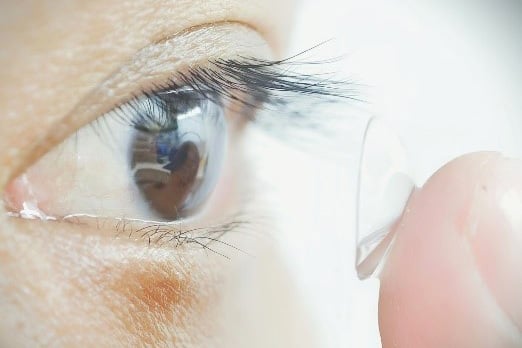In a groundbreaking development reminiscent of science fiction, scientists have engineered wearable infrared contact lenses capable of granting night vision, even when the wearer’s eyes are closed. This innovation, unveiled by a research team from the University of Science and Technology of China in a study published in Cell, could redefine the boundaries of human sensory perception.
How These Revolutionary Infrared Contact Lenses Work
Unlike bulky infrared goggles that rely on external power, these novel contact lenses operate on a different principle: they directly convert infrared light into visible light using specialized nanoparticles. The study detailed how ten human participants, equipped with these lenses, were able to perceive infrared wavelengths normally invisible to the naked eye.
The core technology employs “upconverting nanoparticles” – minuscule particles designed to absorb multiple low-energy photons from the near-infrared spectrum (800-1600 nm range) and re-emit them as single, higher-energy photons within the visible light spectrum (400–700 nm). This allows mammalian eyes to process the converted light. Previously, the researchers had successfully induced infrared vision in mice by injecting such particles directly into their retinas. However, the latest advancement sought a non-invasive method. To achieve this, the team integrated these nanoparticles with the biocompatible polymers typically used in standard soft contact lenses.
From Animal Models to Human Application: Testing the Lenses
Initial tests involved a smaller version of these contacts on mice. Researchers observed that mice wearing the lenses behaved as if they could perceive infrared light. Given mice’s natural preference for dark spaces, they were offered a choice between a completely dark box and a box illuminated solely by infrared light. Without the lenses, the mice showed no preference. With the infrared contact lenses, however, they were significantly more likely to choose the genuinely dark box, avoiding the infrared-lit one.
Following the successful animal trials, human participants were recruited. The results were compelling: individuals wearing the lenses could detect Morse code-like flashes of infrared light and discern the direction of an incoming infrared beam from an LED. Tian Xue, a neuroscientist at the University of Science and Technology of China and the study’s senior author, stated to Cell Press, “It’s totally clear cut: without the contact lenses, the subject cannot see anything, but when they put them on, they can clearly see the flickering of the infrared light.”
Interestingly, participants reported even clearer perception of this flickering information with their eyes closed. Xue explained, “near-infrared light penetrates the eyelid more effectively than visible light, so there is less interference from visible light.” The team also developed modified lenses enabling users to distinguish between different infrared wavelengths. For instance, 980 nm infrared light was converted to blue visible light, while 808 nm was converted to red.
Current Limitations and the Path to Enhanced Vision
Despite these exciting developments, the current iteration of infrared contact lenses has limitations. Participants could not make out fine environmental details; their enhanced vision was restricted to perceiving infrared light directly from an LED source. The authors attribute this to the scattering of incoming infrared light by the contact lenses.
To address this, the researchers also experimented with wearable eyeglasses built on the same nanoparticle principles. While this approach offered some improvement, allowing users to distinguish basic infrared patterns and shapes, it still fell short of enabling the perception of ambient infrared light.
The technology is not yet at the “super-vision” level. Scientists are actively working to enhance the sensitivity and resolution of these devices. “In the future, by working together with materials scientists and optical experts, we hope to make a contact lens with more precise spatial resolution and higher sensitivity,” Xue commented.
The Future of Infrared Vision Technology
The development of these infrared contact lenses marks a significant step towards non-invasive wearable devices that could augment human vision. While still in its early stages, this technology holds considerable promise for various applications. Tian Xue elaborated on the potential: “There are many potential applications right away for this material. For example, flickering infrared light could be used to transmit information in security, rescue, encryption or anti-counterfeiting settings.” As research progresses, we may be on the cusp of a new era in human sensory capabilities.
For MaagX readers keen on the latest in tech and scientific breakthroughs, this development is one to watch. The journey from lab experiment to practical super-vision is ongoing, and future refinements could unlock unprecedented visual experiences.











